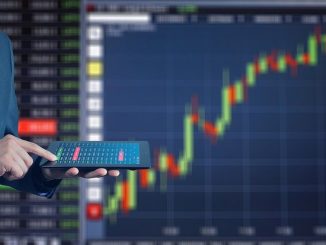
A futures market is a central financial marketplace where people can trade contracts that derive their value from an underlying asset. The most common underlying assets include commodities, stocks, and currencies.
People trade in futures markets in order to speculate on the future price of the underlying asset or to hedge against price volatility. For example, someone might buy a futures contract for corn if they expect the price of corn to increase in the future. Alternatively, someone might sell a futures contract for corn if they are worried about a potential decrease in the price of corn.
Futures markets can be used to trade both short-term and long-term contracts. Short-term contracts are typically traded on a monthly basis, while long-term contracts are traded on a quarterly basis.
Futures markets are regulated by exchanges such as the Chicago Mercantile Exchange (CME). These exchanges set the rules and regulations for futures trading, as well as provide a platform for trading to take place.
In order to trade in a futures market, people must first open an account with a broker that offers access to the desired market. Once an account is opened, the trader can then place orders to buy or sell contracts.
When it comes to trading futures, there are a few key things that you need to understand in order to be successful. First and foremost, you need to have a good understanding of what a future contract is and how prices are determined. Additionally, it is also important to know about some of the common strategies used by traders in order to make money off of these contracts.
A future contract is basically an agreement between two parties to buy or sell an asset at a certain price at a later date. The most common type of future contract is one that is traded on an exchange, where the terms of the contract are standardized. Each contract has its own specifications, such as the underlying asset, the amount of the asset, the expiration date, and the minimum price fluctuation. Prices for these types of contracts are determined by the forces of supply and demand in the market.
Common strategies used by traders in the futures market include spread trading, day trading, trend following, and hedging.
Spread trading involves taking two offsetting positions in different contracts in order to minimize risk.
Day trading is a strategy where traders take advantage of short-term price movements in the market.
Trend following is a strategy where traders look to buy contracts that are going up in price and sell contracts that are going down in price.
Hedging is a risk management technique used by traders to offset potential losses from adverse price movements. Traders can use futures contracts to hedge their portfolios against losses in the underlying asset.
If you want to be successful in trading futures, it is important to have a good understanding of all of these concepts. By knowing how prices are determined and the different strategies used by traders, you will be better equipped to make money off of future contracts.
Disclaimer: This page contains affiliate links. If you choose to make a purchase after clicking a link, we may receive a commission at no additional cost to you. Thank you for your support!



Leave a Reply